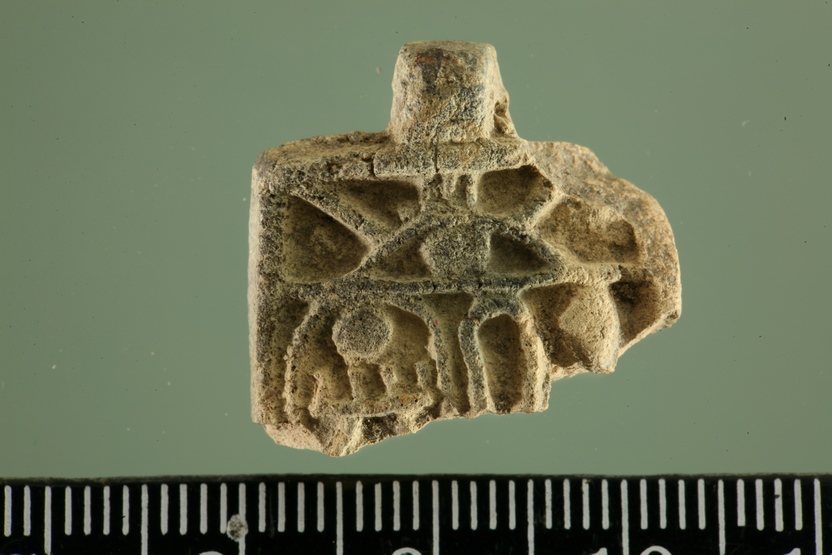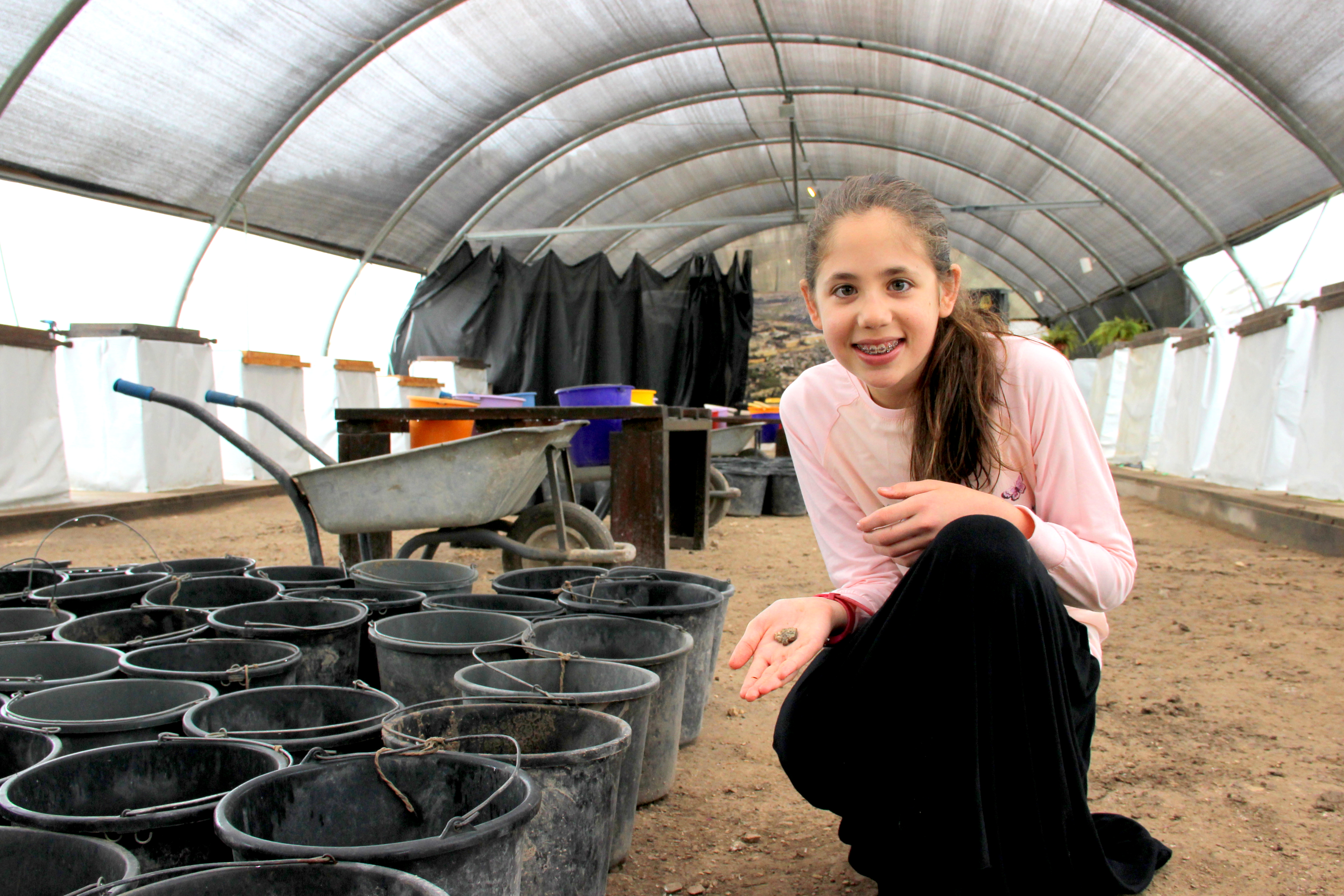Rare Egyptian Amulet Bearing Name of Ancient Pharaoh Found in Earth Discarded from Temple Mount
As the Jewish holiday of Passover quickly approaches, we have has released new information about an amazing find: an amulet bearing the name of Egyptian King Thutmose III. Our story is being shared by news agencies across the world including the New York Times and the ABC News. Please continue reading our Blog to get more up to the minute and detailed information about our finds and continuing research.
Here is a more detailed version of our press release.
JERUSALEM, April 19, 2016 — A rare amulet, more than 3,200 years old, bearing the name of the Egyptian ruler Thutmose III, Pharaoh of the Eighteenth Dynasty who reigned from 1479 – 1425 BCE, was discovered at the Temple Mount Sifting Project located in Jerusalem’s Tzurim Valley National Park within earth discarded from the Temple Mount, and was only recently deciphered by archaeologists. The project is conducted under the auspices of Bar-Ilan University, with the support of the City of David Foundation, the Israel Archaeology Foundation, and the Israel Nature and Parks Authority.

Thutmose III was one of the most important pharaohs in Egypt’s New Kingdom and is credited with establishing the Egyptian imperial province in Canaan, conducting 17 military campaigns to Canaan and Syria and defeating a coalition of Canaanite kings at the city of Megiddo in 1457 BCE. He referred to himself as ‘the one who has subdued a thousand cities,’ and it is known that for more than 300 years, during the Late Bronze Age, Canaan and the city state of Jerusalem were under Egyptian dominion, likely explaining the presence of this amulet in Jerusalem.
 The amulet was discovered by Neshama Spielman, a twelve year-old girl from Jerusalem who came with her family to participate in the Temple Mount Sifting Project. “While I was sifting, I came across a piece of pottery that was different from others I had seen, and I immediately thought that maybe I had found something special,” said Spielman. “It’s amazing to find something thousands of years old from ancient Egypt all the way here in Jerusalem! Celebrating Passover this year is going to be extra meaningful to me.” The Passover festival, commemorating the Biblical account of the ancient Israelites Exodus from Egypt, will be celebrated later this week.
The amulet was discovered by Neshama Spielman, a twelve year-old girl from Jerusalem who came with her family to participate in the Temple Mount Sifting Project. “While I was sifting, I came across a piece of pottery that was different from others I had seen, and I immediately thought that maybe I had found something special,” said Spielman. “It’s amazing to find something thousands of years old from ancient Egypt all the way here in Jerusalem! Celebrating Passover this year is going to be extra meaningful to me.” The Passover festival, commemorating the Biblical account of the ancient Israelites Exodus from Egypt, will be celebrated later this week.
Since the project’s inception in 2004, more than 170,000 volunteers from Israel and around the world have taken part in the sifting, representing an unprecedented phenomenon in the realm of archaeological research.
The small amulet is in the shape of a pendant, missing its bottom part, measures 21mm wide, 4 mm thick and its preserved length is 16 mm. It is made of brown colored faience that lost its glazing. A loop on top allowed it to be strung and hung on the neck. The raised decoration displays a cartouche – an oval frame surrounding Egyptian hieroglyphics bearing the name of the Egyptian ruler. Above the oval framing is the symbol of an eye, and to its right are remnants of yet another hieroglyphic symbol depicting a cobra of which parts of the head and tail are preserved.

While Egyptian scarabs bearing the name of Thutmose III have previously been discovered in Jerusalem, this represents the first time his name has been found in Jerusalem adorning an amulet. Objects bearing the name of Thutmose III continued to be produced in Egypt long after the time of his reign, reflecting the significance and lasting impression of this king.
The amulet can be reconstructed based upon the discovery of an identical pendant found in Nahal Iron in northern Israel, announced in 1978. Along with that pendant, which also bore the name of Thutmose III was another amulet bearing the name of King Seti I, an Egyptian pharaoh who ruled Egypt during the late 14th – early 13th centuries BCE. This seems to indicate that both pendants date to the same time period, namely the late 14th – early 13th century BCE.
The amulet may have been buried in earth brought to the Temple Mount to be used as fill for the expansion of the Mount in Second Temple period. This earth probably originated in the slopes of the Kidron Valley near the Temple Mount, an area which contained tombs of the Late Bronze Age (1550-1150 B.C.E). Pottery sherds dated to this period were discovered in the Temple Mount Sifting Project, including some imported from Cyprus and Mycenaean Greece, as well as a couple of Egyptian style scarabs’.
These artifacts can be added to other finds dated to the Late Bronze Age (1550-1880 BCE) discovered in past years in the City of David as well as artifacts hinting to the possible existence of an Egyptian temple, in the Dominican monastery of St. Étienne north of the Damascus Gate. These Late Bronze Age finds date to the time period corresponding to the eve of the common dating of the Biblical Exodus.
The research of the amulet was conducted by archaeologist Baruch Brandl from the Israel Antiquities Authority.

The Temple Mount Sifting Project was initiated in response to the illegal removal of tons of earth from the Temple Mount by the Islamic Movement in 1999 without any archaeological supervision.
Since the Temple Mount has never been excavated, the ancient artifacts retrieved in the Sifting Project provide valuable and previously inaccessible information. The many categories of finds are among the largest and most varied ever found in Jerusalem. Even though they have been extracted from their archaeological context, most of these artifacts can be identified and dated by comparing them with those found at other sites.
In addition to the ongoing sifting of the earth illegally removed from the Temple Mount, The Temple Mount Sifting Project has focused its efforts on the enormous tasks of processing and studying the finds and preparing them for scientific publication. Presently, more than half a million finds are still waiting to be processed and analyzed in their laboratory. Click here for information about how to become more involved in our publication process.
Discover more from The Temple Mount Sifting Project
Subscribe to get the latest posts sent to your email.












I used to take my children, then young, fossil hunting with me. maybe because they are closer to the ground, or better eye sight, but they always found the most and most beautiful finds!!
This is an amazing find! Studies the LBA in art history. Truly this is a Significant discovery!
Fascinating! In context, where did this Pharoah fit into Egyptian-Israeli history?
Thanks for your question! There is actually a great exhibit at the Israel Museum about the relationship between Israel and Egypt if you are interested in learning even more. See http://www.imj.org.il/exhibitions/presentation/exhibit/?id=1073
Pharoah Thutmose III, among other things, is known for his military campaigns. We know a lot about them because records of his campaigns are inscribed on the wall of the temple of Amun in Karnak. Thutmose III helped turn Egypt into a superpower by stretching his empire from Southern Syria through to Canaan and Nubia and he generally did this by conquering regions city by city. Egypt largely succeeded in their military campaigns because they appropriated the use of Hyksos military technology and had superior weaponry.
The first, and probably largest of Thutmose III’s 17 military campaigns took place in Canaan. The Canaanite city-states revolted against Pharaonic attempts at hegemony and assembled at Megiddo. Thutmose III, surprised the rebels by choosing the most dangerous route of attack – through the narrow ‘Aruna Pass. After routing the Canaanite forces and capturing rich booty, Thutmose III laid siege to the city for seven months. The description of the battle of Megiddo is the earliest account of a major war in antiquity. According to historians using correlating dates, this battle took place on May 9, 1457 BCE.
Thutmose III’s decisive victory enabled him to incorporate Canaan as a province in the Empire of the New Kingdom. Consequently, the Syrian princes were obligated to send tribute and their own sons as hostages to Egypt. The Assyrian, Babylonian, and Hittite kings all gave Thutmose gifts as well, which he alleged to be “tribute” when it was recorded on the walls of Karnak. Thutmose’s second, third, and fourth campaigns were tours of Syria and Canaan to collect tribute.